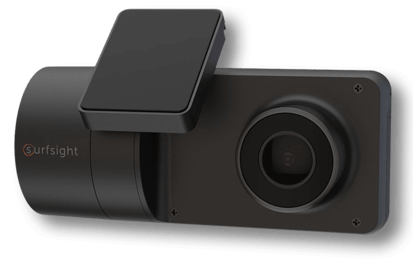To buy in, drivers need to fully understand how dashcams benefit the business – and themselves
Dashcams are critical to tracking your drivers’ behavior behind the wheel. And that behavior matters. After all, your drivers are the face and actions of your business, and every day you entrust them with your expensive equipment, your reputation, and your customer relationships.
But just because dashcams are important doesn’t mean they are automatically popular. Drivers, especially those who have been in the profession a long time, may balk at what they see as an intrusive technology and the company’s lack of trust in their ability.
 There are multiple ways to overcome these objections. One of the most important and effective ways is to install cameras as part of a multifaceted safety program. Drivers are far more likely to accept cameras if they can see they are just part of a larger demonstrated commitment to safety – and that cameras are about helping to protect them, not spying on them.
There are multiple ways to overcome these objections. One of the most important and effective ways is to install cameras as part of a multifaceted safety program. Drivers are far more likely to accept cameras if they can see they are just part of a larger demonstrated commitment to safety – and that cameras are about helping to protect them, not spying on them.
The other important strategy is to communicate on an ongoing basis the reasons why the company is employing cameras. This is an area where we often see companies stumble. For one, they fail to adequately explain to drivers – well before installation day – why they plan to install cameras. Then, they fail to reinforce these reasons after the fact, to continue to ensure driver buy-in. Another way they fail with communication is that they don’t disclose all the reasons they are using cameras.
Here are three messages about cameras we often see companies fail to communicate as effectively as they should.
1. Cameras are about safety, not spying. Drivers are more likely to be accepting of cameras when they can see them in the context of the company’s larger safety program. Also, the advanced technology found in cameras within many telematics solutions can alert drivers when they are engaging in unsafe behaviors, such as distracted driving, hard braking, or swerving out of their lane. Cameras with artificial intelligence technology can even help to prevent accidents by predicting dangerous situations.
2. Cameras protect drivers, not just equipment. While a company will install dashcams in part to avoid tragic accidents, protect their equipment, and steer clear of costly fines and litigation, cameras also benefit drivers. When a driver is cited, even though they are driving a company vehicle, they are subject to accumulating points on their own driver’s license and putting themselves at risk of having their license suspended – which can also result in their termination and having a difficult time landing another driving job elsewhere. Cameras minimize these risks to drivers.
3. Cameras aren’t just about monitoring driving. Another important reason companies install cameras is to protect their equipment and cargo from theft. If drivers understand this, they are less likely to believe the sole purpose of cameras is to monitor their driving.
Collecting Actionable Data
Dashboard cameras are an important part of a complete telematics system, as they collect critical, actionable data that can promote safety, prevent accidents, and protect drivers as well as the company’s investment.
Given their importance, engage your telematics solution provider to partner with you to determine the type and number of cameras you need for your fleet, and to provide expert installation and calibration of the cameras.
But don’t overlook the need to communicate to your drivers. They need to know why you have chosen to install cameras – and the multiple ways cameras can benefit them.

